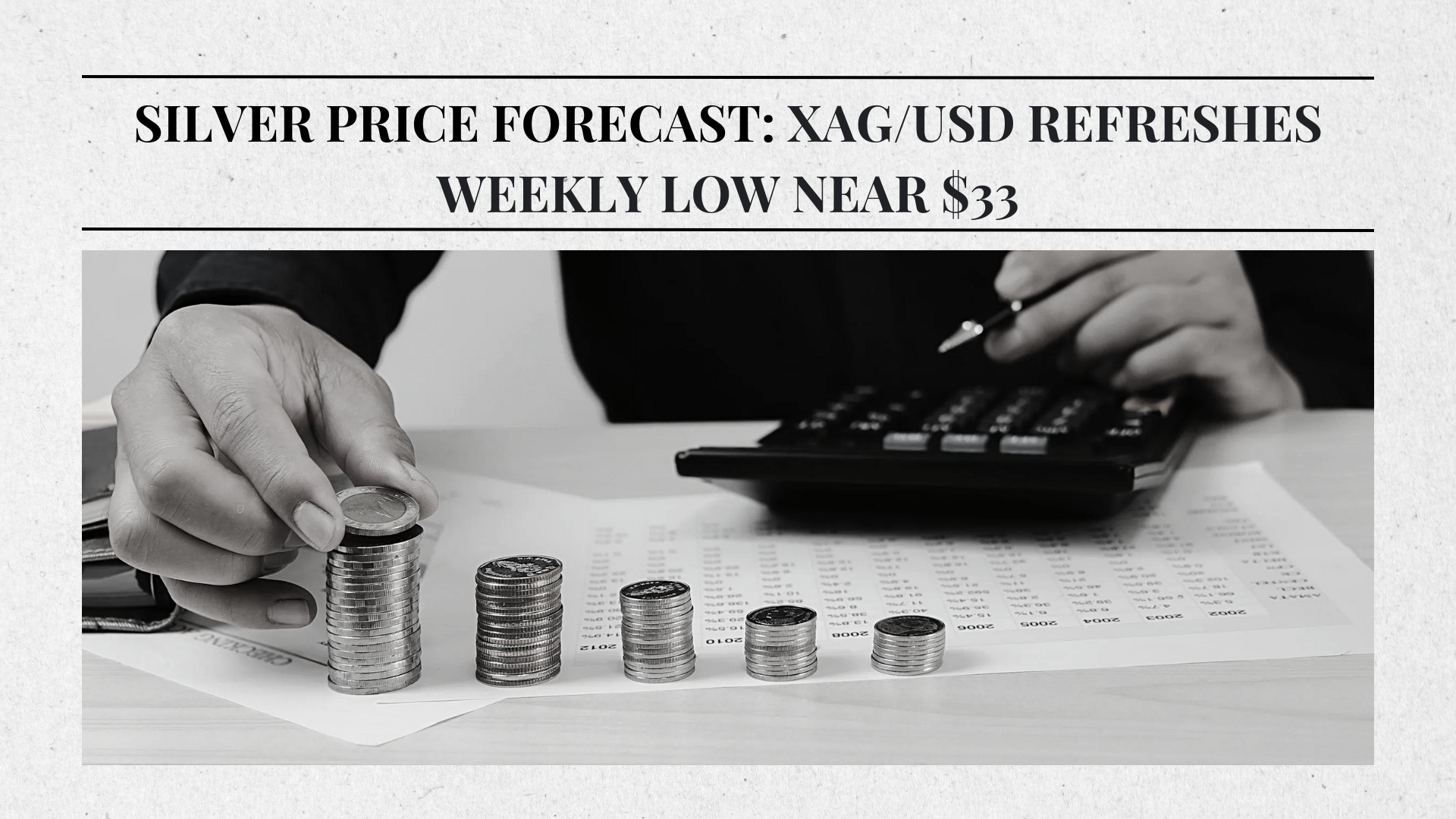- The Fed’s lack of urgency in lowering interest rates causes the price of silver to plummet to almost $33.
- It is anticipated that US President Trump’s actions will cause inflation to rise and economic growth to decline.
- Potential reciprocal tariffs from Trump restrict silver’s decline.
The price of silver (XAG/USD) hits a new weekly low on Friday during the European session, trading close to $33.00. As the US dollar (USD) continues to rise on growing hopes that the Federal Reserve (Fed) would not lower interest rates in the foreseeable future, the white metal continues its losing run for the third trading day.
The US Dollar Index (DXY), which compares the value of the US dollar to six other major currencies, surges to about 104.00.
According to the Fed, interest rates won’t be lowered until they have a better understanding of how much US President Donald Trump’s tariffs will slow economic growth and raise inflationary pressures. These signals followed the central bank’s second consecutive decision to leave borrowing rates in the 4.25%–4.50% range unchanged.
For non-yielding assets like silver, the prospect of the Fed holding interest rates at their restrictive levels for an extended period of time is not encouraging.
In the meanwhile, concerns about Trump enacting retaliatory tariffs on April 2 would prevent the price of silver from falling too much. Global growth is anticipated to be impacted by Trump’s tariff measures. Historically, safe-haven investments have been more appealing when there is increased global uncertainty.
Silver technical analysis
Near the October 22 high of $34.87, the silver price is struggling to return to the flat border of the Ascending Triangle chart pattern formation on the daily timescale. The above chart pattern’s upward-sloping border is positioned from the August 8 low of $26.45. Technically speaking, the Ascending Triangle pattern shows that market participants are unsure of themselves.
The price of silver drops to close to the 20-day Exponential Moving Average (EMA), which is currently trading at $32.95.
The bullish momentum appears to have ended when the 14-day Relative Strength Index (RSI) drops below 60.00. The bullish bias is still present, though. The high of $32.77 on March 6 will serve as crucial support for the price of silver going lower. However, the main obstacle will be the high of $34.87 on October 22.
Why do investors purchase silver?
Among investors, silver is a highly traded precious metal. It has long served as a medium of commerce and a store of value. Despite being less common than gold, traders may use silver to diversify their holdings, for its inherent worth, or as a possible hedge in times of rising inflation. In addition to trading silver through vehicles like Exchange Traded Funds, which track its price on global markets, investors can purchase silver in physical form as coins or bars.
Which elements affect the price of silver?
Numerous factors can influence the price of silver. Because silver is a haven, geopolitical unrest or concerns about a severe recession may cause its price to rise, though not as much as that of gold. Silver is a yield-less asset that typically appreciates as interest rates decline. Because the asset is valued in dollars (XAG/USD), its movements are likewise influenced by the performance of the US dollar (USD). While a weaker dollar is likely to drive up costs, a strong dollar tends to hold the price of silver in check. Prices can also be impacted by other variables like mining supplies (silver is far more plentiful than gold), investment demand, and recycling rates.
